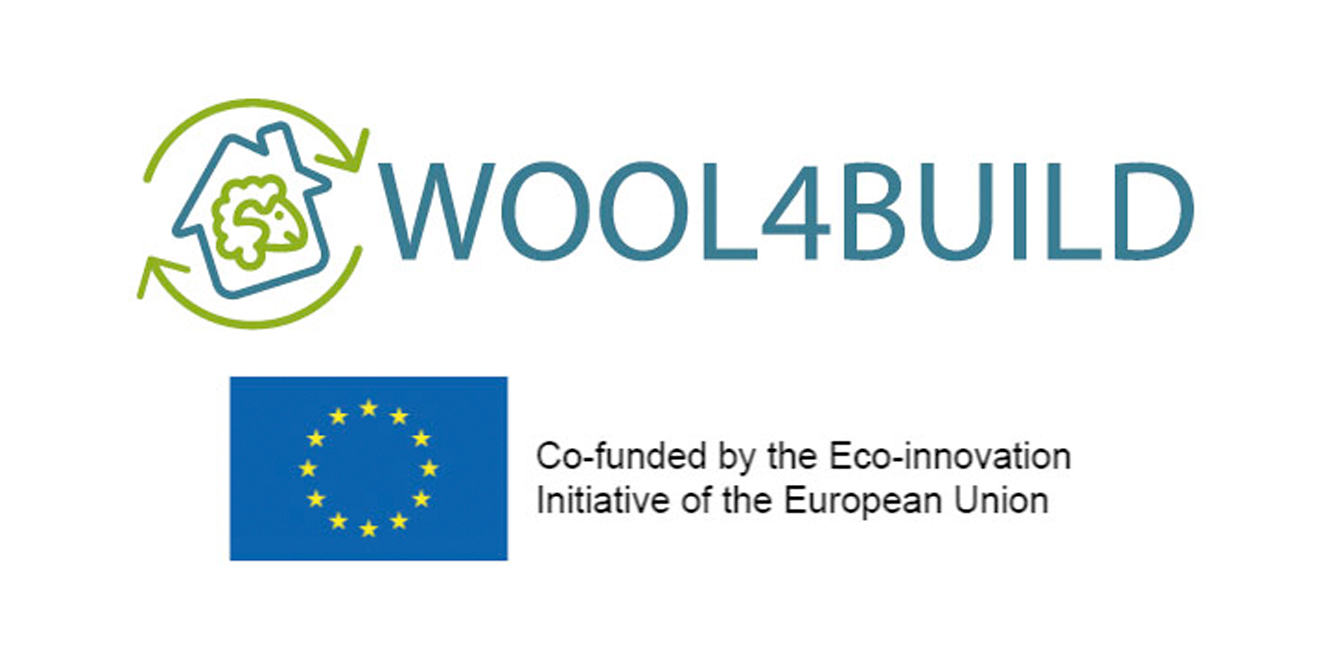Project WOOL4BUILD was financed by the European Union under environmental research programme “Eco-Innovation”. Environment Park is a partner of the project, together with Spanish companies INPELSA, ACR Group, Politecnica University of Valencia, Aitex Textile Research Institute.
The main objective of the project, launched in November 2014, is developing sheep wool a thermal and acoustic insulation, able to compete, in terms of technical and economic features, with the most commonly used mineral insulating materials.
In the building industy, as in many other sectors, demand of new products realised with environmentally-friendly materials is increasingly growing. It is possible to find different kinds of materials and technical solutions in the building insulation industry. Along with the most commonly used mineral insulating materials, there is a wide range of natural and sustainable insulatinf materials, claiming their own place in the global market. In most cases, such organic materials have very interesting technical features, nevertheless, they tend to be severely penalized on the market, because they have to compete with mass-produced materials, sold at a competitive price.
Project WOOL4BUILD aims at developing economically competitive solutions, and the final cost minimization compared to the natural materials currently on the market was made possible through a full optimization of the material production process and the use of wool that was recycled directly from the fur cutting processes carried out within INPELSA tannery.
This results in a double environmental advantage: on one hand, reusing waste material from an industrial process, on the other hand, obtaining raw material for the production of insulating material with low water and energy consumption.
WOOL4BUILD insulating materials are currently produced in two densities, depending on their end use – 30 kg/m3 and 20 kg/m3 – which achieved significant results in terms of thermal and acoustic insulation performances. Such results have made possible WOOL4BUILD commercial launch from January 2016.
Technical data of WOOL4BUILD products
Sheep wool is a recycled material which in turn can be retrieved from building demolition or renovation in order to be recycled again and reintegrated into the production cycle of new panels. This contributes to reducing consumption of non-renewable resources and building sector solid waste.
WOOL4BUILD insulating materials have inherent advantages in terms of environmental impact. By comparing production data with similar non-natural products on the market, WOOL4BUILD insulating materials require 52% primary energy and 30% less thermal energy, significantly reducing greenhouse gas emissions.
The advantages of WOOL4BUILD
The WOOL4BUILD insulating material is available in comfort and premium versions, which have been developed with different densities and thickness of 40 and 50 mm, the values of thermal conductivity and sound absorption coefficient shown in the above Table were obtained.
By confronting the technical features of sheep wool insulation to fiberglass insulation of equal density, the excellent thermal and acoustic behaviour of WOOL4BUILD can be assessed, sometimes exhibiting even better characteristics.
Thanks to wool’s hygroscopic properties, the insulating WOOL4BUILD material is also an excellent humidity regulator, thus absorbing water vapor in humid areas and releasing it in dry areas, favouring indoor comfort by exploiting the inherent characteristics of its materials. Being it a completely natural material, sheep wool does not entail any health risk, both during the installation process and during its use.
The insulating WOOL4BUILD is treated to be fully protected against insects, according to the ISO 3998 standard (1977), and against fire (class E according to the UNI EN 13501-1 standard (2007).
As far as the installation method is concerned, panels are installed in a procedure which is almost identical to those followed for other mineral wool products. It can be installed in wall cavities – either double-skin exterior brick or interior stud walling – in ceilings and dividing walls. This way, installers don’t need a special training for positioning the panels, since the installation procedure is exactly the same as the one for other materials.
The project proves how an insulating material for the green building industry, made of recycled materials, can be a valid alternative to traditional mineral insulation materials.
WOOL4BUILD has achieved the twofold objective of minimising industrial waste production and obtaining a natural, low-cost insulating material by using recycled raw materials. To all this must be added that the technical performances of insulation and comfort of a natural insulating material realised by using sheep wool are better than those of a mineral insulated material with the same density.




